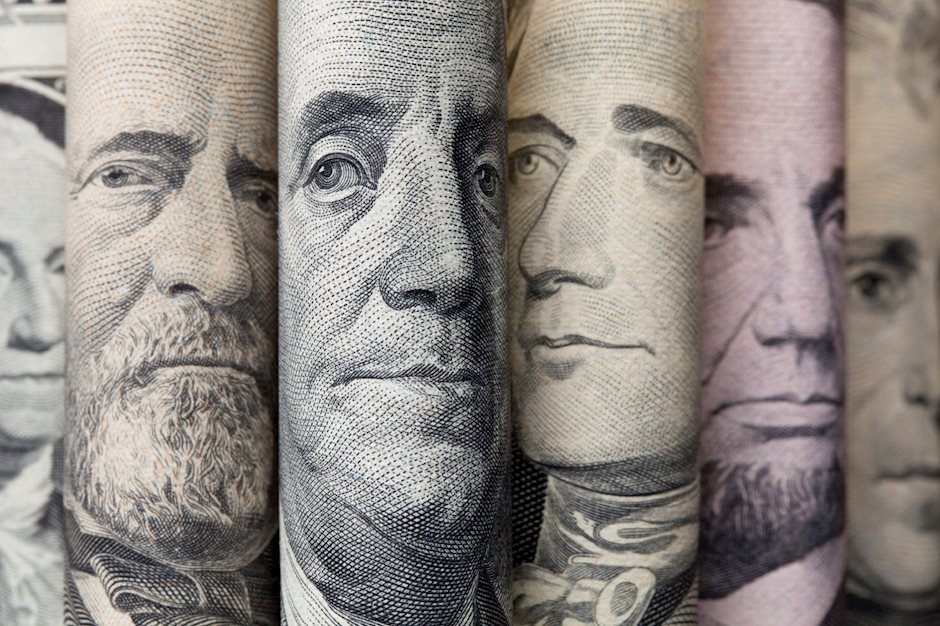US Dollar Index rises above 104.00 due to caution as US election race remains competitive
- The US Dollar Index gains ground as early exit polls increase volatility in the financial markets.
- Georgia exit polls indicate that Trump holds a 10% lead over Harris, estimated with less than 1% of votes counted.
- Pennsylvania exit polls show a lead for Harris with about 8% of the expected votes counted.

The US Dollar Index (DXY), which measures the value of the US Dollar (USD) against its six major peers, appreciates to near 104.20 during the Asian trading session on Wednesday. The US Dollar gains ground due to market caution ahead of the outcome of the US presidential election. Polling stations have now closed in over two dozen states, and early exit polls are starting to come in, increasing volatility in the financial markets.
Early exit polls in Georgia, one of the first states with available data, indicate a tilt toward Republican presidential candidate Donald Trump. With 16 electoral votes at stake, preliminary results suggest Trump has about a 10% lead over Democratic candidate Kamala Harris, although this estimate is based on less than 1% of votes counted, according to The Washington Post.
Preliminary results from the Pennsylvania exit polls show a lead for Harris, according to CBC News. With approximately 8% of the expected votes counted, Kamala has secured a 71% majority. The state has 19 electoral votes at stake.
Improved US Treasury yields are bolstering the US Dollar, with the 2-year and 10-year yields on US Treasury bonds standing at 4.23% and 4.34%, respectively, at the time of writing. Traders remain cautious due to the tight race in the US presidential election. The market is closely watching the control of Congress, as a sweep by either party could lead to significant shifts in spending and tax policies.
On the monetary policy front, traders are focusing on the Federal Reserve's interest rate decision scheduled for Thursday, with a broad consensus anticipating a 25 basis point cut. According to the CME FedWatch Tool, there is a 96.4% probability that the Fed will lower rates by a quarter percentage point at its November meeting, signaling strong market expectations for a modest cut.
Regarding economic data, the US ISM Services Purchasing Managers Index rose to 56.0 in October, up from 54.9 in September, surpassing the forecast of 53.8. However, the S&P Global Services PMI registered at 55.0 in October, slightly below both the previous reading and the expected 55.3.
US Dollar FAQs
The US Dollar (USD) is the official currency of the United States of America, and the ‘de facto’ currency of a significant number of other countries where it is found in circulation alongside local notes. It is the most heavily traded currency in the world, accounting for over 88% of all global foreign exchange turnover, or an average of $6.6 trillion in transactions per day, according to data from 2022. Following the second world war, the USD took over from the British Pound as the world’s reserve currency. For most of its history, the US Dollar was backed by Gold, until the Bretton Woods Agreement in 1971 when the Gold Standard went away.
The most important single factor impacting on the value of the US Dollar is monetary policy, which is shaped by the Federal Reserve (Fed). The Fed has two mandates: to achieve price stability (control inflation) and foster full employment. Its primary tool to achieve these two goals is by adjusting interest rates. When prices are rising too quickly and inflation is above the Fed’s 2% target, the Fed will raise rates, which helps the USD value. When inflation falls below 2% or the Unemployment Rate is too high, the Fed may lower interest rates, which weighs on the Greenback.
In extreme situations, the Federal Reserve can also print more Dollars and enact quantitative easing (QE). QE is the process by which the Fed substantially increases the flow of credit in a stuck financial system. It is a non-standard policy measure used when credit has dried up because banks will not lend to each other (out of the fear of counterparty default). It is a last resort when simply lowering interest rates is unlikely to achieve the necessary result. It was the Fed’s weapon of choice to combat the credit crunch that occurred during the Great Financial Crisis in 2008. It involves the Fed printing more Dollars and using them to buy US government bonds predominantly from financial institutions. QE usually leads to a weaker US Dollar.
Quantitative tightening (QT) is the reverse process whereby the Federal Reserve stops buying bonds from financial institutions and does not reinvest the principal from the bonds it holds maturing in new purchases. It is usually positive for the US Dollar.
Author

Akhtar Faruqui
FXStreet
Akhtar Faruqui is a Forex Analyst based in New Delhi, India. With a keen eye for market trends and a passion for dissecting complex financial dynamics, he is dedicated to delivering accurate and insightful Forex news and analysis.

















